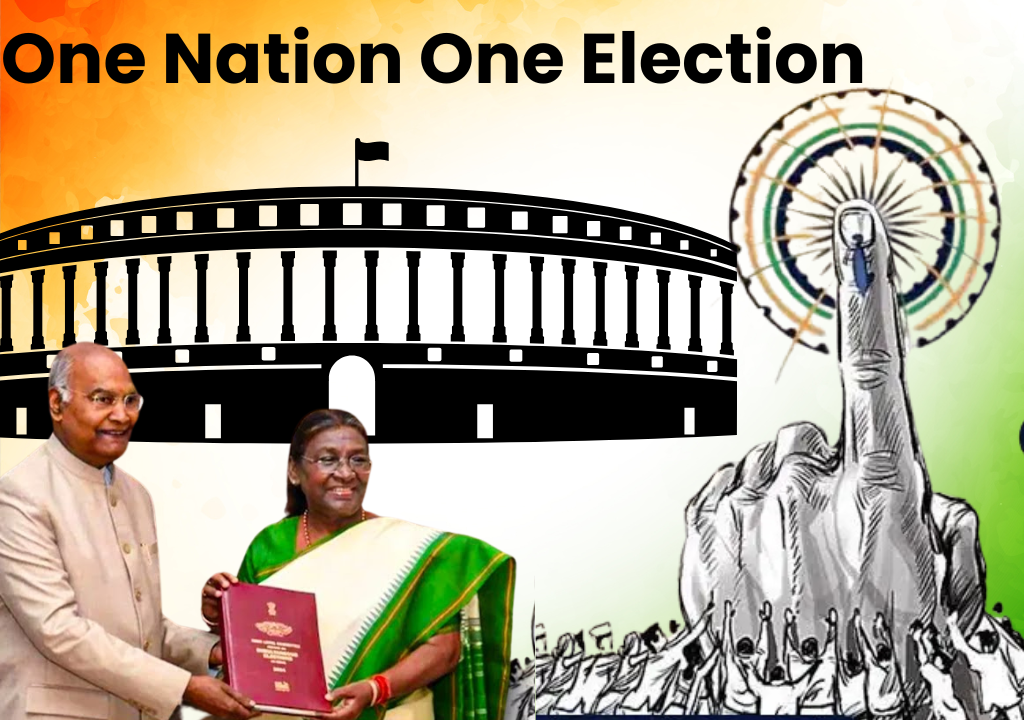Introduction
The debate around One Nation One Election is rapidly gaining momentum in India’s political and media circles. At its core, the proposal envisions a synchronized electoral calendar for the Lok Sabha and all State Legislative Assemblies. While the government sees this as a reform to reduce costs and streamline governance, many critics warn it could undermine federal principles and regional representation. Is this initiative a bold leap forward or a constitutional challenge waiting to happen?
What is One Nation One Election?
One Nation One Election refers to holding simultaneous elections for the Parliament (Lok Sabha) and all state assemblies. Historically, India followed this model during the first four general elections (1952–1967). The system was disrupted due to early dissolutions of some legislative bodies.
To reintroduce this approach today would require massive legal and logistical changes. A voter would cast votes for both national and state representatives during the same election cycle, possibly using a single Electronic Voting Machine (EVM).
What Has Happened Recently?
In 2023, the Indian government set up a high-level committee chaired by former President Ram Nath Kovind to explore the feasibility of implementing One Nation One Election. This followed recurring mentions of the proposal in the ruling party’s manifestos and public statements.
The committee is now assessing the constitutional, legal, logistical, and financial implications of implementing such a sweeping reform. The move has reignited discussions on whether electoral synchronization enhances efficiency or risks eroding the foundational pillars of India’s democracy.
Why One Nation One Election is Being Considered?
Proponents highlight several potential benefits:
- Reduced Election Costs: Holding polls separately drains financial and human resources. A single nationwide election could cut expenses drastically.
- Governance Efficiency: Frequent elections cause repeated imposition of the Model Code of Conduct, slowing down development projects. Synchronization could allow uninterrupted policymaking.
- Policy Continuity: With fewer elections, governments can focus more on policy implementation rather than appeasing vote banks before upcoming polls.
- Boost to Voter Turnout: One consolidated election may increase voter participation, especially in rural and tribal areas.
- Administrative Streamlining: Elections demand huge manpower and security deployment. Simultaneous polls would reduce this strain significantly.
- Avoiding Continuous Campaign Mode: Political parties are often in campaign mode, distracting from governance. A fixed schedule would allow longer periods of stable administration.

These reasons form the core argument for why One Nation One Election is seen as a necessary step forward.
Links Suggested: India-Bangladesh Relations: Why India Withdrew the Trans-Shipment Facility
Major Challenges in Implementation
Despite the benefits, several challenges make implementation of One Nation One Election highly complex:
- Constitutional Amendments: Articles 83 and 172 of the Indian Constitution stipulate fixed terms for the Lok Sabha and State Assemblies. Altering these would require constitutional amendments with support from a majority of states.
- Political Consensus: Opposition parties argue that simultaneous elections may blur national and regional issues. Voters might choose the same party for both, affecting the diversity of democratic choices.
- Logistical and Technical Challenges: India’s electoral scale is vast. Managing elections for over 900 million voters on the same day requires significant resources, doubling the number of EVMs and VVPATs.
- Contingency Concerns: If a state government collapses mid-term, will the state wait until the next national election? Such scenarios complicate the practical aspects of synchronizing cycles.
- Undermining Federalism: The proposal is seen by many as centralizing power, potentially weakening the independence and significance of regional governments.
- Judicial Questions: What happens if a state government falls mid-term? Will fresh elections be held immediately or will President’s Rule be imposed until the next cycle?
The proposal would need extensive electoral reforms, advanced planning, and most importantly, national-level consensus.
What’s Next for the Reform?
The Kovind Committee is expected to present its recommendations soon. If accepted, the government may initiate a series of constitutional amendments, followed by infrastructural upgrades by the Election Commission.
For implementation, the following would be required:
- Amendments to the Constitution, Representation of the People Act 1951 and election schedules.
- Procurement of double the number of EVMs and VVPATs.
- Massive public awareness campaigns to educate voters on the new process.
- Clear mechanisms to deal with mid-term dissolutions or loss of majority in any legislative house.

Only after addressing these can the nation move forward with confidence.
Links Suggested: India-Sri Lanka Relations : 5 Strategic Wins for Both Nations
Looking Ahead
Many democratic countries have fixed election cycles. However, in a federal democracy like India, where state governments represent diverse linguistic, cultural, and regional identities, uniform election timelines may pose risks.
India’s electoral system allows voters to evaluate governments at different levels independently. Synchronizing elections may overshadow local issues with national narratives, thereby reducing political diversity and grassroots accountability.
Hence, One Nation One Election should not only be viewed from the lens of efficiency but also through constitutional values and inclusive governance.
Conclusion
One Nation One Election presents both promise and peril. On one hand, it can reduce costs, enhance governance, and bring predictability to India’s democratic calendar. On the other hand, it could dilute the spirit of federalism and local governance.
For this reform to be truly democratic, it must be implemented with consensus, care, and constitutional caution. Every reform must uphold the essence of democracy: representation, participation, and decentralization.
If pursued wisely, One Nation One Election may indeed be a step forward—but it must not come at the cost of India’s democratic ethos.

